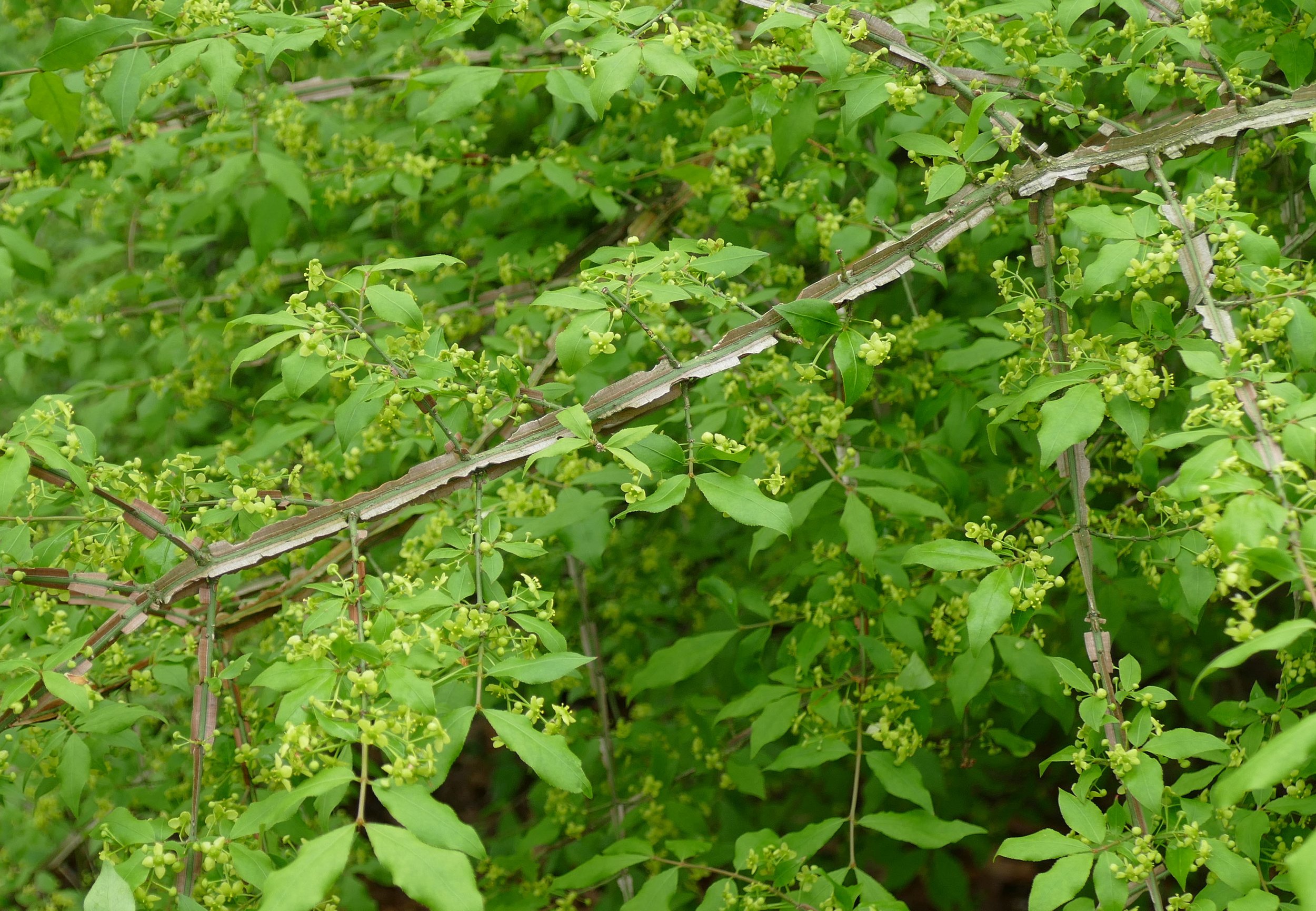
Burning Bush
Burning bush is easy to love. It is well suited to conditions in Beverly Shores and puts on a spectacular display of fall color. It makes itself at home, whether in sun or heavy shade. If only it would stay at home. Burning bush takes over the forest floor from native species, crowding out just about everything else. It is illegal to collect, sell, or plant burning bush in Massachusetts, New Hampshire, Maine and Connecticut, and burning bush is restricted in Wisconsin and New York. In a long-term study in Maine, three invasives—Norway maple, oriental bittersweet, and burning bush—took over a large area completely, but then burning bush beat back even the other two invasives, monopolizing the trial locations.
Burning Bush showing winged stems
Burning Bush in Fall
Burning Bush, Myrtle Ave.
-
Burning bush is easily identified in the fall, as its bright red color stands out. It comes in two flavors, Euonymous Alatus, the version most commonly seen in Beverly Shores, and Euonymous Alatus Compactus, a smaller version typically sold at garden centers. The smaller version is only “compact” in comparison to its larger cousin, which can be 15 feet tall and 20 feet across. The larger version has winged stems, as seen in the photograph above left.
-
You can find burning bush throughout the Beverly Shores island. It tolerates everything from full sun to heavy shade. It is not picky about soil and grows well in sandy soil. It will tolerate normally moist to quite dry conditions, but not very moist soils.
-
Burning bush invade not only disturbed habitats including forest edges and roadsides but also undisturbed forests. Birds and other wildlife eat and disperse the fruit. Once established, it can form dense thickets, displacing native vegetation. Though banned throughout the northeast, burning bush is still sold legally in Indiana to be planted as an ornamental.
-
Burning bush produces so many seeds and spreads so widely that the first rule of control is to stop planting it in the first place. DO NOT PLANT!! You can pull small plants easily, though you will certainly have a lot of them to pull. Cut-stem or foliar spray herbicides work well.

